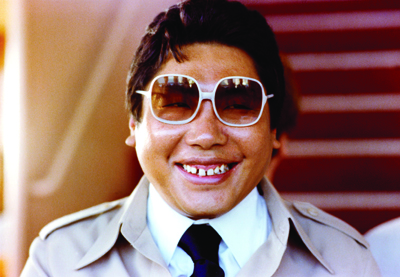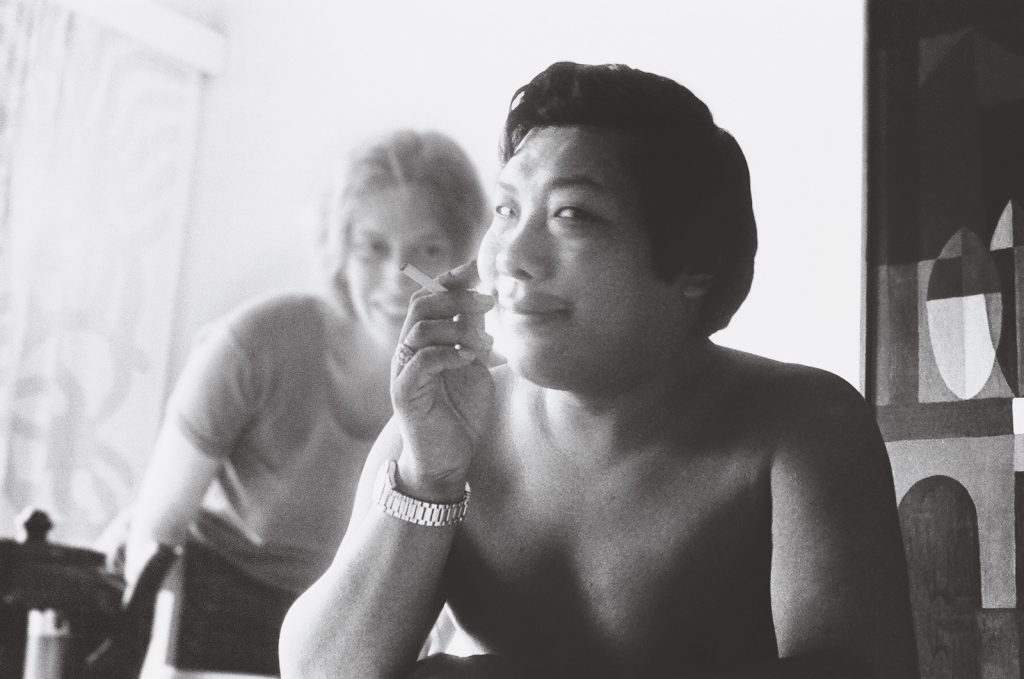In 1983, Chögyam Trungpa Rinpoche, the controversial lama who introduced Tibetan Buddhism to North America in the tumultuous early 1970s, asked one of his students, the director Johanna Demetrakas, to make a “Shambhala film.” Demetrakas, who had studied with Trungpa Rinpoche since 1971 and was familiar with his vision of an enlightened society based on the secular spiritual teachings later outlined in his book Shambhala: The Sacred Path of the Warrior, agreed to make the movie, although she had no idea what Rinpoche meant by a “Shambhala film.” In a recent interview, she said, “It was a command. And then he died.” That is, Demetrakas failed to fulfill her duty. Until now.

After Rinpoche’s untimely death in 1987 at the age of 47, Demetrakas was asked to film his cremation, which was going to take place at Rinpoche’s first North American retreat center, Karme Chöling, in Vermont. Demetrakas—who has directed TV shows like L.A. Law and Doogie Howser, M.D.—agreed to direct a four-camera shoot and figured she’d make a short film from that very moving footage. (There were three thousand people at the cremation, which was presided over by His Holiness Dilgo Khyentse Rinpoche.) But there was no real money, and so the idea of a film based on the cremation was dropped. What there was, however, were reels of footage that Demetrakas and other students had shot over the years of Rinpoche teaching, and Demetrakas’s vivid Super 8 documentary footage of the first summer of love at Naropa University, which Rinpoche had founded with his students in 1974. Among the many things Demetrakas captured Rinpoche saying on film in the early days was, “This world does need your help so badly. And so on behalf of this world, I would like to invite you to come and do something about it.”
Chögyam Trungpa Rinpoche’s legacy is massive—he wrote many books, including the bestseller Cutting Through Spiritual Materialism; founded Naropa University; established several hundred meditation and retreat centers around the world; and had thousands of students, many of whom continue to dedicate their lives effectively to his vision—and to distill this all into a single documentary cannot be done. Trungpa Rinpoche’s Buddhist and secular teachings on the nature of reality and mind, and on wisdom and compassion alone, are too vast to comprehend in a lifetime, let alone an hour-and-a-half.
Still, Demetrakas has managed to create a riveting kaleidoscope of images and sound bites that bring to life the young monk who saw the madness of the world reflected in the Chinese invasion of Tibet in 1959, led 300 people out of that country on donkey and foot, and arrived at the Indian border ten months later, in 1960, with only 13 people left in the party. Demetrakas’s film tells how Rinpoche won a grant to go to Oxford shortly after, and there—and later in Scotland—immersed himself in Western culture, learning not only the nature of our particular suffering but how to talk to us in an idiom so uniquely comprehensible to us that we might actually be able to liberate ourselves.
The material Demetrakas works with most skillfully is Rinpoche’s transformation from a young monk to a realized master who looked like an ordinary guy from the seventies (a cigarette-smoking, saki-drinking, multiple-lady-loving man in jeans and a tie-dyed T-shirt), and then from a seemingly somewhat ordinary seventies guy to an eighties man who wore elaborate military uniforms and often seemed drunk—and, to an outside observer, maybe even a little nuts. This is the real heart of the film, where several of Trungpa Rinpoche’s family, friends, lovers, and close students—including Allen Ginsberg, Pema Chödrön, Ram Dass, and Rinpoche’s wife, Diana Mukpo—are interviewed and talk about their firsthand experiences of Rinpoche and how they made sense of them (or didn’t make sense of them). These interviews, illustrated with old photographs and film footage and voiceovers of Rinpoche speaking, are not only biographical; each interview is a teaching in itself—a pith instruction passed from Trungpa Rinpoche to his student and now to us. Though we won’t become enlightened listening to these funny, scary, and mind-stopping instructional tales, we will definitely know where to begin—with meditation and a necessary awareness of our own basic goodness and self-delusion.
For those of us who never met Trungpa Rinpoche but came face-to-face with Buddhism through his books, watching Demetrakas’s film is like being introduced to someone we’ve fallen in love with from afar but never imagined we’d meet. There he is in the flesh, up on the screen, reminding us of our lost hearts, which recede further and further from us each day as the dark age grows darker. It feels sad, knowing that this may be all that we, the general public, have of Trungpa Rinpoche in terms of live footage—it is not the man himself, and so it feels a little meager. At the same time, though, it’s amazing that we have this beautifully conceived and edited film at all, and we have to thank Trungpa Rinpoche for that: he told Johanna Demetrakas to make it, before the story was ready to be told, and when it was time, she followed his command.
Thank you for subscribing to Tricycle! As a nonprofit, we depend on readers like you to keep Buddhist teachings and practices widely available.
